
The Big Island of Hawai’i – January 2016
After San Diego we redeemed some British Airways points to fly on American Airlines from LAX to KOA (Kona, on the big island of Hawaii). This is one of the cheapest ways to get a free flight to Hawaii, at only 12.5k miles + $5 ticketing fee one-way per person from the west coast. You can transfer Chase Ultimate points to British miles or just use British miles, if you got them. Accumulating enough miles from credit card signup bonuses makes it even easier. For instance, the signup bonus for the Chase Sapphire credit card is usually 50k points (enough for 4 one-way tickets to/from Hawaii), and the British Airways credit card sometimes goes up to 100k miles on signup!
We loved our first impression of the island – the Kona airport is entirely outdoors! I assume that because the weather is so routinely pleasant (and probably because it is cheaper) they don’t even have jetways for the planes – you just walk right out and down the portable stairs that are brought plane-side. In addition, in many places along the road from airport to town there are loads of beautiful bougainvilla bushes, one of our favorite tropical plants:

Beautiful roadside bushes.
We stayed all seven nights in Kona-Kailua on the west side of the island. We initially planned to split up the stay with some nights in Hilo on the east side of the island, but some free hotel nights became available in Kona which made the decision to stay the whole time in Kona easy. In hindsight, we are glad we chose this path since we did not enjoy the Hilo side of the island nearly as much. Our place of stay was the Holiday Inn Express which we highly recommend. It had a recent renovation, central location and they didn’t charge for parking which is such a common (and crappy) procedure in Hawaii. Also, our stay was completely free with points. The free breakfast gets old (it’s the same at every Holiday Inn in the nation), but that was the only annoying thing about the stay.
Kona has all the features of a larger town (big box stores, decent restaurants, some unfortunate traffic) but packaged in a much smaller island town. It’s located on the water in sort of an arid zone at the base of Mauna Loa volcano, but you can quickly ascend the slopes to a more humid zone at 1,000 to 3,000 ft elevation above town where many locals live. This is also where much of the famous coffee grows.

Kailua town square

All decked out for a tropical Christmas!

Pier in Kailua

Kailua town square
There are a number of good beaches within a short drive of Kona. The one in town was small but did have some great snorkeling and sunsets. In addition to the multi-hued parrot fish, yellow tangs and Moorish idols, we saw a massive school of some other fish which I was not able to identify. While I snorkeled, Elisa also tried out paddle-boarding which she enjoyed.
Each evening we would try to catch the sunset – here are some of our favorites.
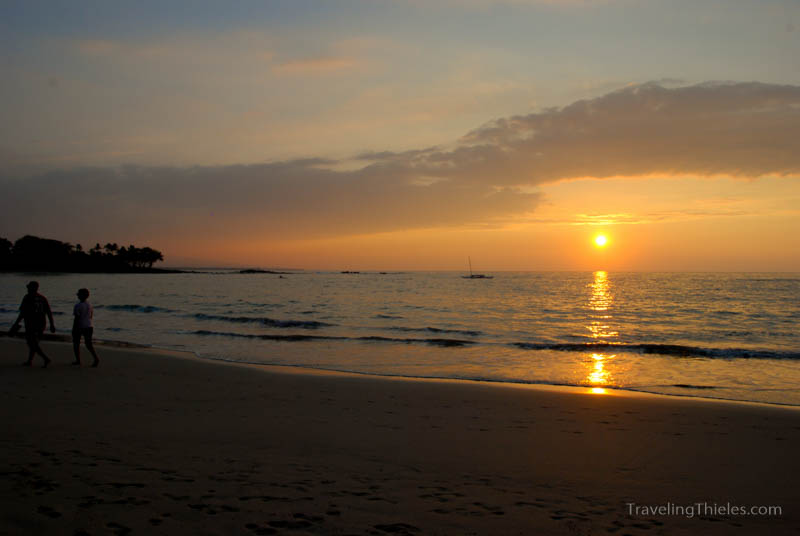
Sunset in Kailua

Sunset in Kailua
A fun daytrip was to the Waipo’o valley via the small town of Wailea. Wailea was halfway up the slope of Mauna Kea, but in a wet area which meant lots of neat vegetation and flowers. The town is pretty small, but we found a nice coffee shop and had fun shopping for items to resell on Amazon at the local Long’s Drug Store (it seems Hawaii keeps their Christmas clearance items around longer than elsewhere in the country – probably due to relatively small population of customers – and so they have to discount everything real deep – like 90% – before it will sell!).
Not too far from Wailea is Waipo’o valley – definitely an adventure to pursue. It was formed as a result of a massive landslide on one side of the area volcano, is close to 2,000 feet deep in parts, and is one of the most remote places in Hawaii visited by tourists. There are no tours it seems, and the only way down into the valley is by boat, helicopter, or via a 1-mile road which reaches 45 degree incline in places. It was a little too intense to drive so we hiked it instead – was a real calf killer. There were plenty of locals and brave tourists in Jeeps that went down though.

Steep Waipo’o valley
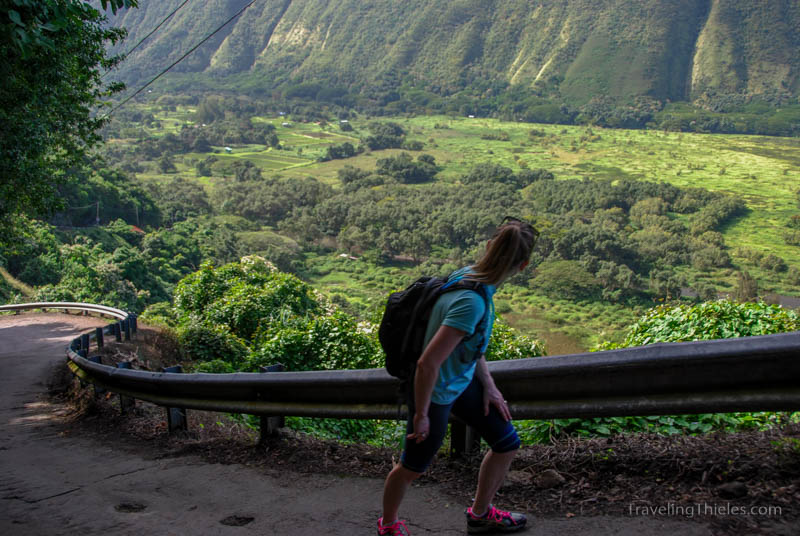
The hike down is a killer, but worth it
At the mouth of the valley is a broad sand beach popular with locals for surfing, bbqs, and just hanging loose.
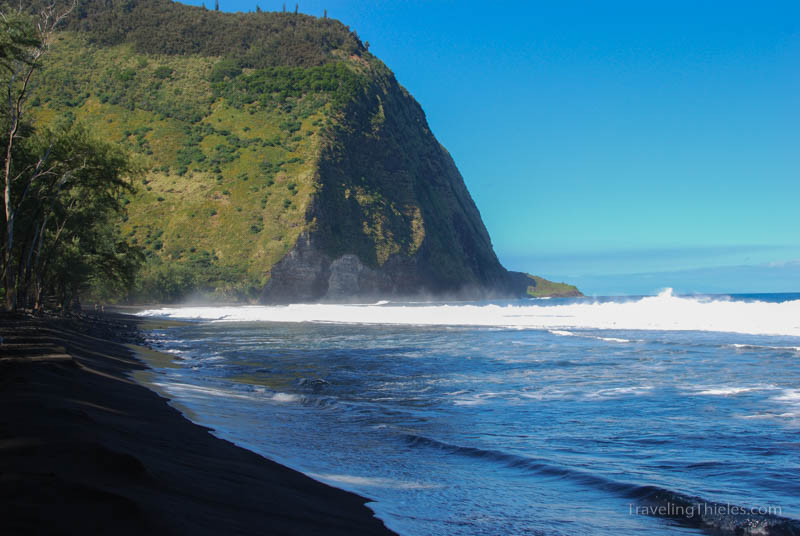
Beach in Waipo’o valley
Our favorite part is the little waipo’o river that empties out of the valley into the ocean. We really enjoyed the sensation of standing in the middle of the stream and looking up-valley – which looked like something out of remote Alaska – and then turning around to face the roaring Pacific ocean.
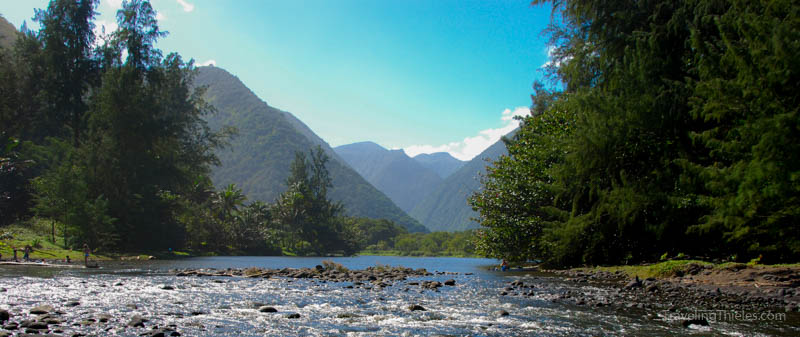
Stream coming out of Waipo’o valley looked like Alaska
Hawaii is not high on our list of culinary destinations, with the exception being anything to do with seafood. Their everyday fish and chips for instance is made with mahi mahi :). One of the most unique Hawaiian foods is Poke, which seems to encompass any sort of chopped seafood in sauce, either pickled or not. The classic version is Shoyu style. Shoyu which means soy sauce in Japanese and this style generally includes chopped Ahi tuna, mixed with soy sauce, scallions, a little garlic, ginger and sugar or honey. Since we had poke on our last visit (see post here), we came ready this time to load up! I think we had it for five meals during our week on the big island. We knew it was all fresh since we watched the staff bring the fish in whole and chop it up on the spot. Here are some of our poke meals and our favorite poke spot:
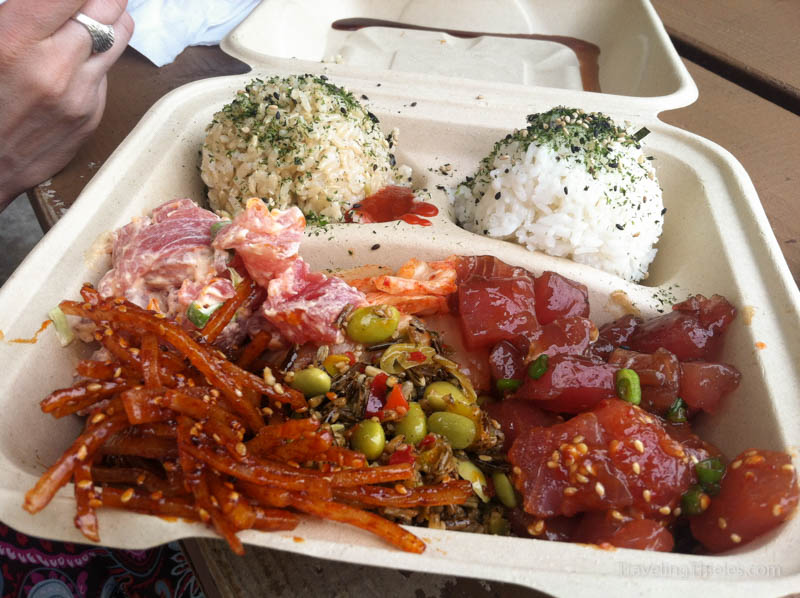
Our favorite poke was at Da Poke Shack in Kona. From left to right: spicy ahi, cured, sweet cod, edamame salad, shoyu poke
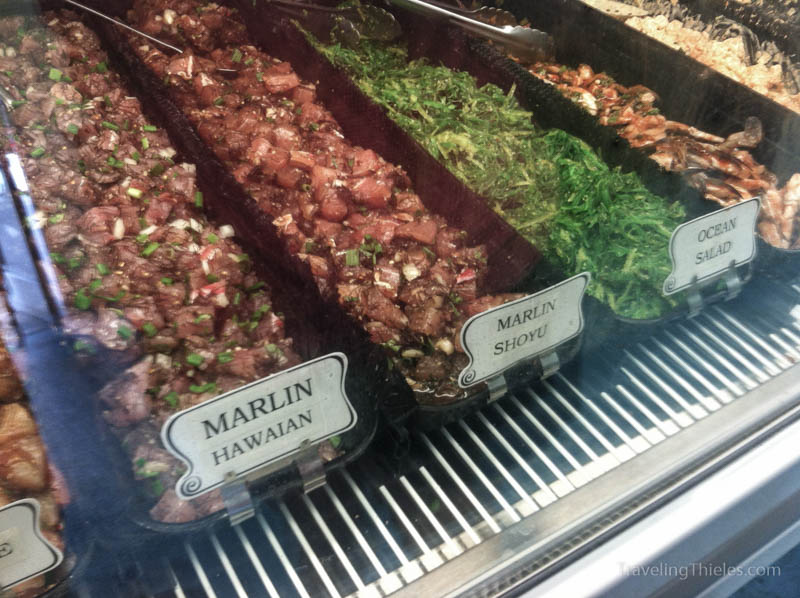
Some unique poke in Hilo
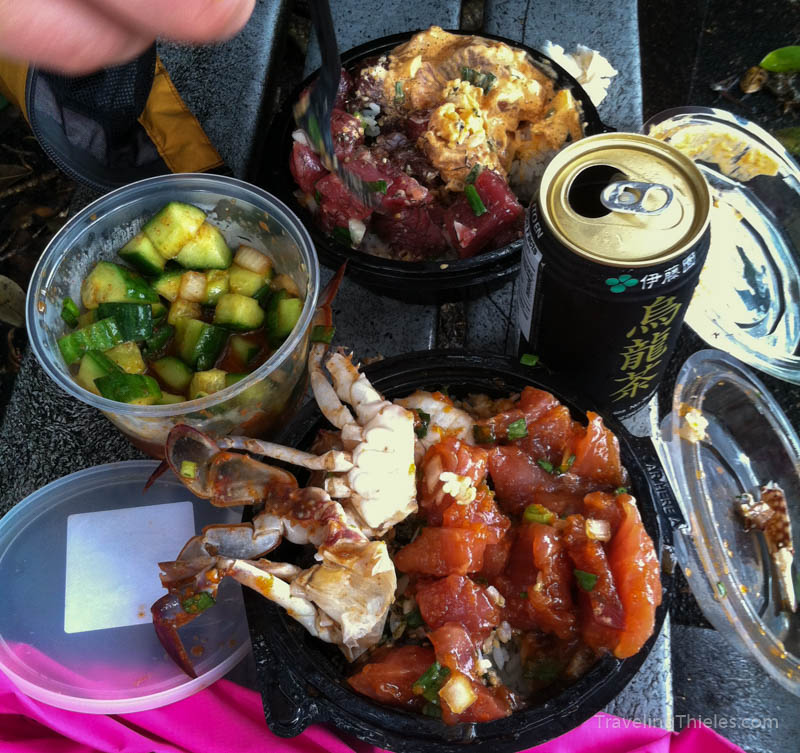
Soft shell crab poke here (not our favorite). The seafood market in Hilo was best value – huge servings

Our favorite – Da Poke Shack
Another day trip we took was to the south end of the island – home to the southernmost point in the USA (and generally everything else that can lay claim to being southernmost) – as well as Volcanos National Park.
The landscape in the south is much more agrarian, starting with fields of coffee plants as the highway winds south along the coast from Kona, and then into miles and miles of macadamia trees. The bottom tip of the island is very poor pasture land, which made for some long vistas on the drive:

Cool vistas in the south of island
At the southernmost point there is a fun spectacle – craggy cliffs and crazy people jumping off them! It was probably a 25 foot dive and the waters relatively calm but apparently locals do it even when the waves are big. Again, we opted just for picture souvenirs.
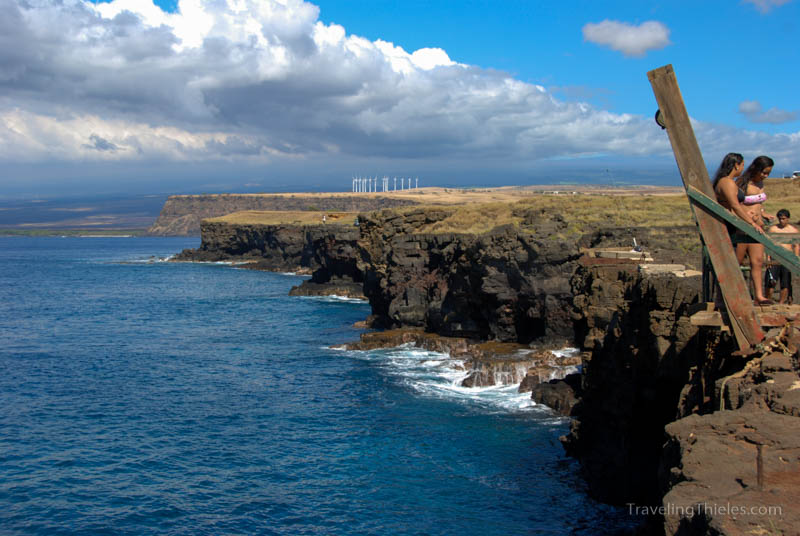
Crazy divers!
Also in the south part of the island is a “green” sand beach, supposedly one of only two in the US (or the world?). It’s quite a hike to get to – approximately 3 miles along the coast. The views were great and we needed some exercise after a lot of poke eating and beachside relaxing so we went for it.
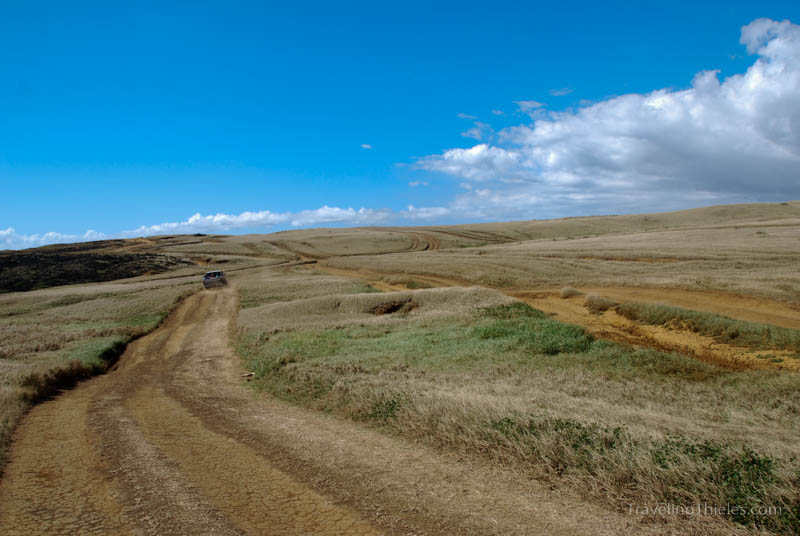
Our hike to the green sand beach
This one proved the saying that the journey is sometimes better than the destination. While it’s true that the sand had a green tint to it, it definitely wasn’t the bright green that a google image search would lead you to believe! Also, since the greenish sand was mixed with black sand, and the walls of the extinct volcano cinder cone that ringed the beach were also dark in color, laying on the green sand beach felt like laying in a little solar oven.
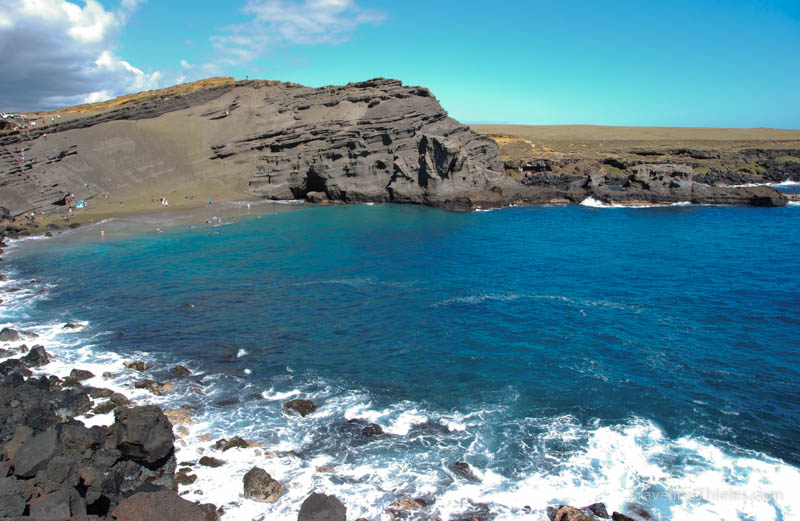
Green sand beach cove

Green sand beach – a long flat hike followed by short steep hike for this. There were whales in the water apparently
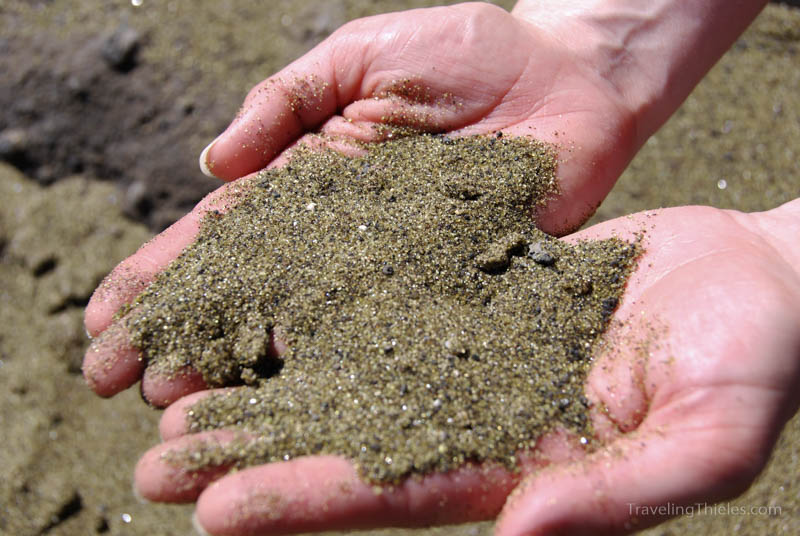
Green sand? Kinda..
To save time we opted to catch a shuttle back to the parking area. This was truly an adventure for us since our driver looked like he was maybe 16 yrs old tops, told us to hop into his truck bed with 8 other tourists and drove us over some of the jankiest paths back to the entrance. We only did it since we had seen about 30 vehicles doing the same thing pass us on our walk to the beach. I am sure it was safer than it felt at the time and since we survived I can say that it was a unique roller coaster worth trying!
We took a third daytrip to the east side of the island and to the visitor center on Mauna Kea. The east side is the wet side and it rained most of the time we were there. Consequently, we didn’t have a great experience in Hilo or the surrounding areas. We drove around quite a bit but didn’t find much that we wanted to do. It seemed like the restaurants may have been better on that side, but since we were never there in the evening and didn’t want to drive back late to the other side of the island we didn’t get to partake. One thing we did enjoy was all the free shortbread cookies at the Big Island Candy company. We also saw this cool waterfall:
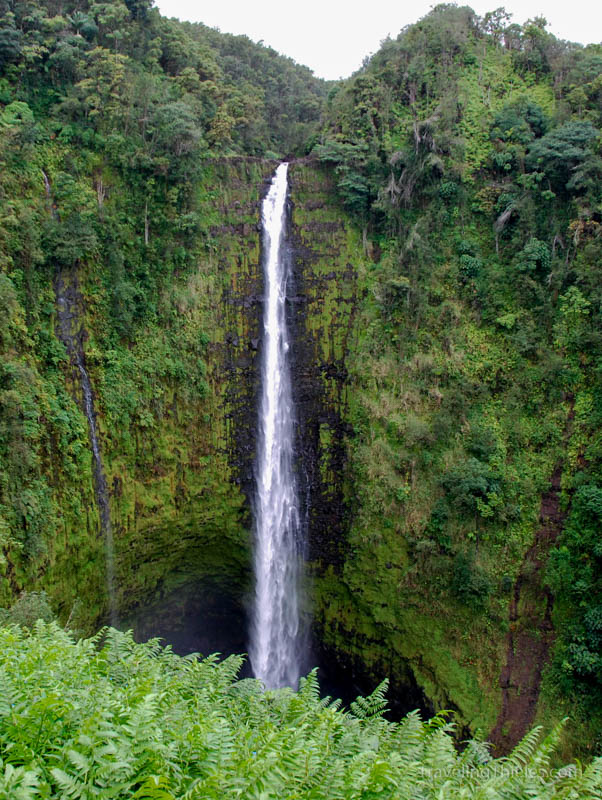
Waterfall on east side of island

Waterfall on east side of island
Going up Mauna Kea was probably our favorite experience on the island. We drove up to about 9k feet where the visitor center was, but since our AWD Nissan Rouge was having trouble just getting up to there we decided to heed the numerous warnings about attempting the ascent above 9k feet without a 4WD so we stopped at that point. It took a bit to get adjusted to the altitude which we did by walking around a bit and seeing all the neat lava/volcano geology and fun looking silversword plants.
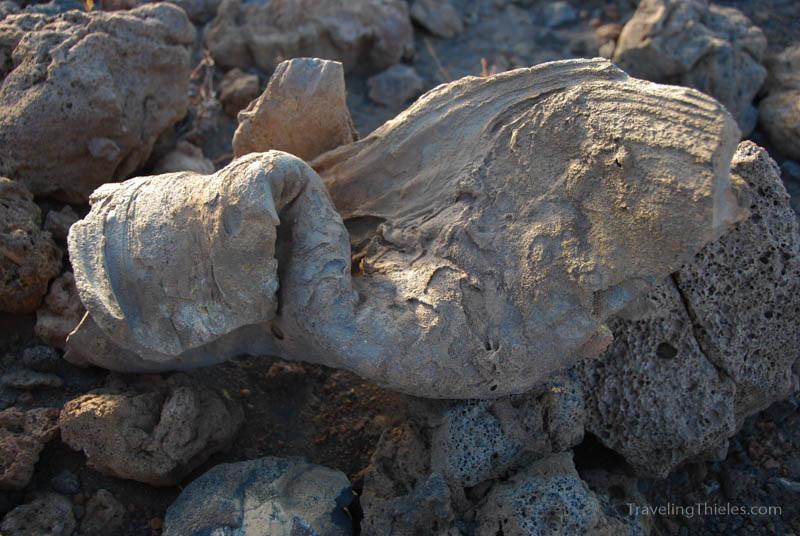
Neat lava rock on top of Mauna Kea

Rare silversword plant which only grows in places like Mauna Kea
We watched a glorious sunset and then stuck around for a couple hours to enjoy an astronomy presentation by some local volunteers with $20k telescopes. The sky is incredibly clear on Mauna Kea and there are many observatories at the top. Some fun facts about Mauna Kea and the skies:
• The mountain extends below sea level to the ocean floor. From floor to top it is 9 kilometers tall and therefore the tallest mountain in the world.
• The mountain is home to the Keck telescope which has the world’s largest mirror.
• 80% of the night sky can be seen from Mauna Kea. Combine this with the low humidity (around 5%) at high altitude and very little air and light pollution (all the streetlights on the Big Island use either LED or low-pressure sodium light fixtures which greatly reduce the light not directed at the roadway), the top of the volcano is arguably the best place in the world for astronomy.
• Because of snow cover in January and February, Mauna Kea can occasionally be skied. There are no facilities, and winds can reach speeds of 50–68 mph, but people still do it.
Once the sun went down we saw some neat things such as the Hubble telescope pass by at 4.6 miles per second, some shooting stars, the milky way galaxy, and the glow of the sun off the space dust in our solar system. The stars were amazing but unfortunately we only have mental images left.

We took lots of sunset photos
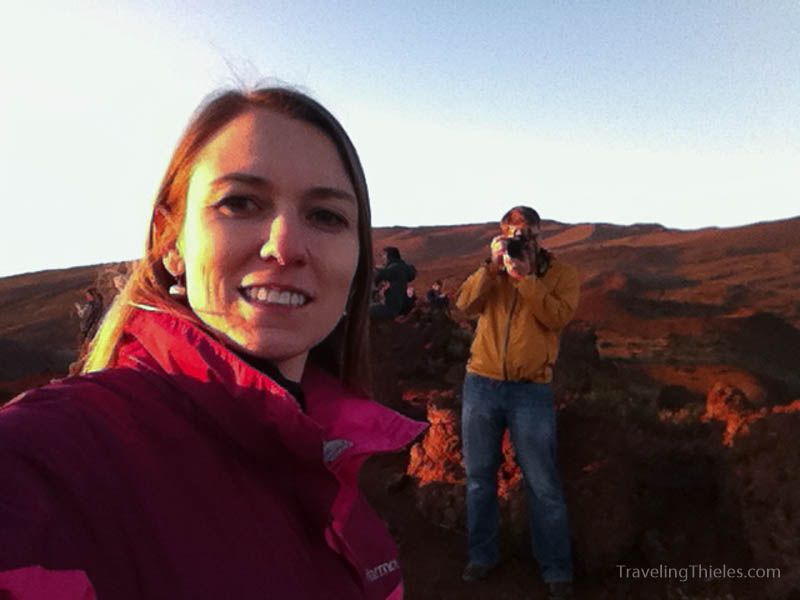
And lots of us..
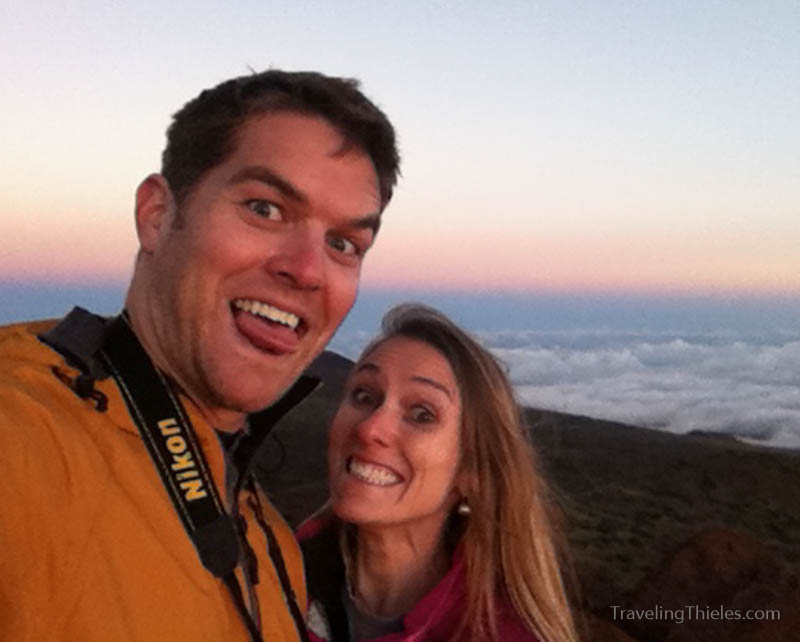
At this point we had taken too many photos..
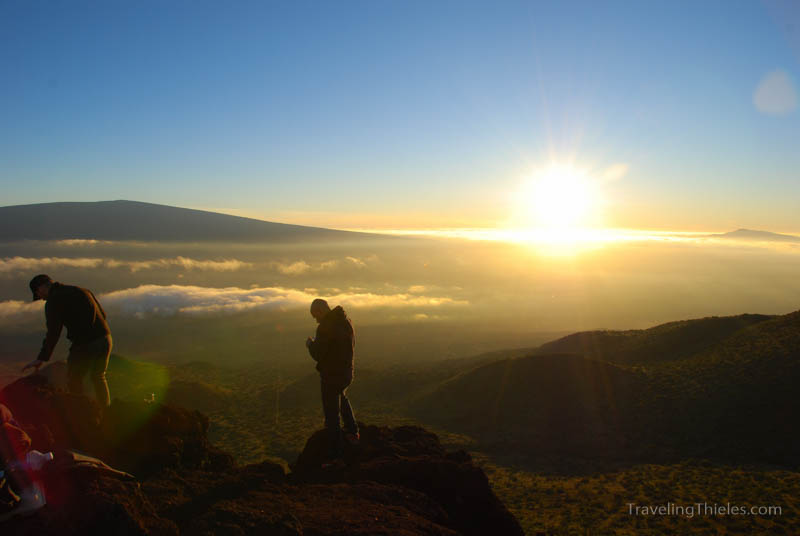
Mauna Kea sunset

Mauna Kea sunset
————————
Our overall impression of the big island of Hawaii is that it is more of a local destination that doesn’t receive as much tourism as the other populated Hawaiian islands. Because of its relatively large size, trying to hit all the sites in short order was also a real challenge. We were there for 7 nights and we ended up driving around 800 miles. We left feeling like we had covered it pretty well and had some time to relax, but it would take at least another week to enjoy it best.
We enjoyed the diverse eco-systems – deserts, lava fields, jungles, beaches, mountains, although we have learned that lava fields can get really boring to drive through after a time. Oddly though, we decided after visiting many Hawaiian islands that we like the “dry” sides better than the wet sides. They seem to have the same amount of pretty flowers but with more sunny days.
I’m writing this from a B&B near the north shore of Maui. That’s our next update!


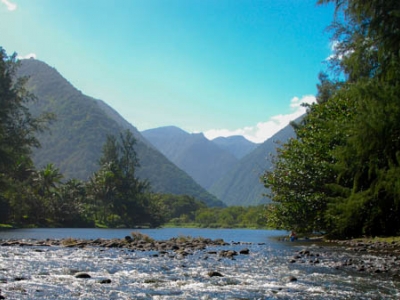
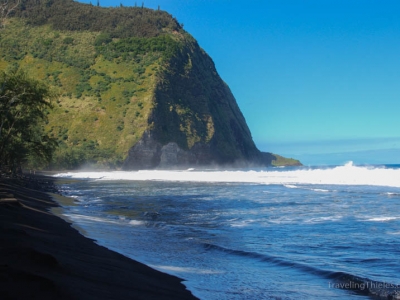

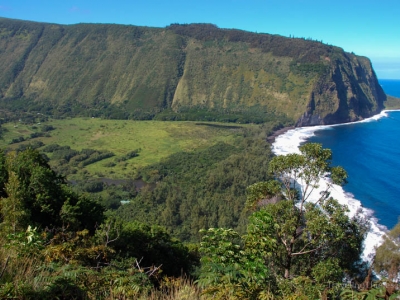




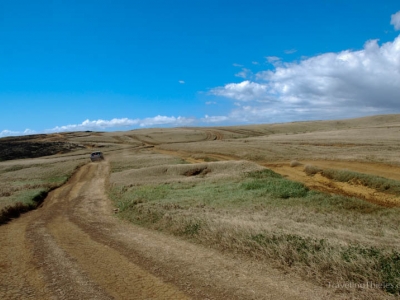

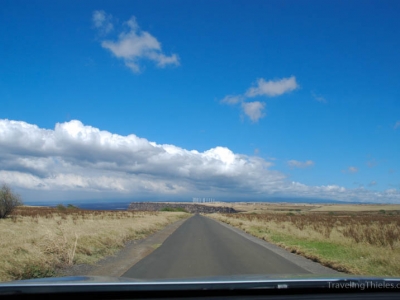
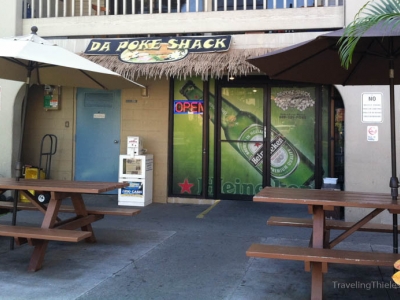
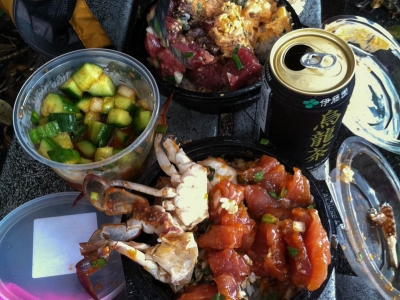
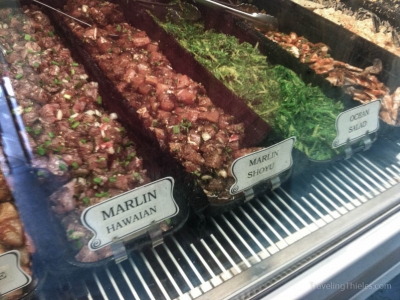
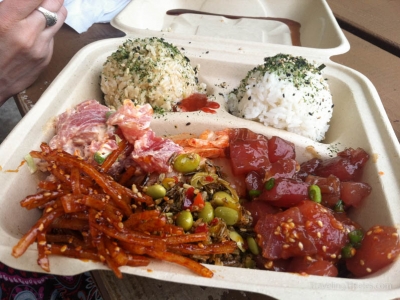

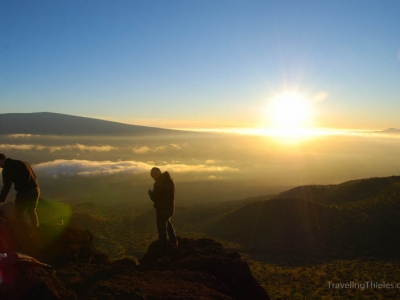
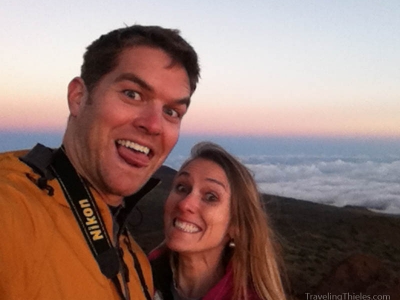

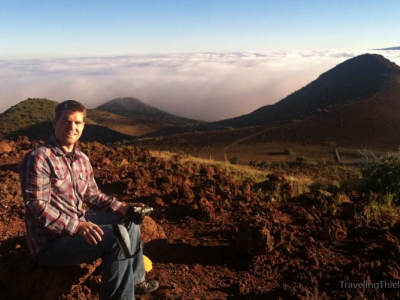

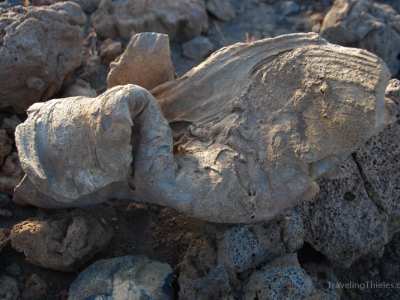



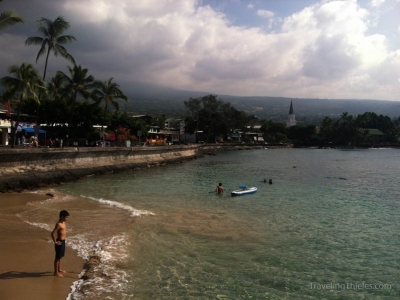
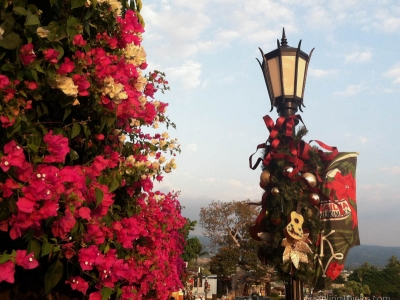

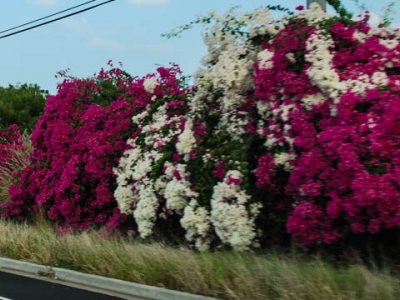





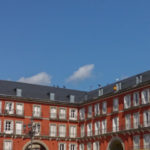
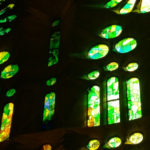
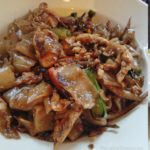
Beautiful Hawaii. Pics are great!!